
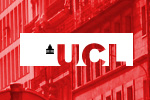
 |
 |
World centre in the heart of EuropeIn the sixties, bilingualism in Brussels is legally regulated, but Brussels is now also in the midst of large migrations from the Mediterranean, Europe and all corners of the globe. This influx of other language speakers will not make the language situation any easier. Many foreigners opt for French as lingua franca and speak their own languages at home and in their communities. Elsewhere, in the international institutions, English takes the lead. The result is that Brussels in the beginning of the twenty first century consists of many minorities. foreigners in BrusselsForeigners in Brussels are nothing new, in the past (see >Broeksele), foreign rulers enjoyed governing from Brussels and brought their entire court with them. Groups of migrants stayed in Brussels after the French and Dutch rule in the nineteenth century. Even today, the French are the second largest group of non-Belgians in the capital. Brussels has around one million inhabitants. Nearly 30% of them are non-Belgian. Another rough estimate of 8% (Belgium does not keep record of the origin of its inhabitants, so there are no exact figures) is of non-Belgian descent. Because of large migration streams, also within Belgium, half of the adult population in Brussels is not from Brussels itself, making Brussels very much a city in motion. Many Belgian inhabitants have moved out the past 35 years, but Flemings, Walloons and many foreigners have moved in. The situation is somewhat unique because the migrants come from many different backgrounds. On the one hand, there are highly educated employees of European institutions and international organisations, and on the other hand the often less well-educated migrants from Southern Europe, Morocco and Turkey. Apart from that, Brussels also attracts people from the former Central African colonies and the former Eastern Bloc. The number of foreigners in other Belgian cities is a lot smaller (around 10% in Antwerp, 7% in Ghent) and they are generally situated in the lower income categories. Brussels population: % of non-Belgians Prudence is called for when interpreting these figures. For nationality does not necessarily equal where a person is born or what language s/he speaks. Some of these ‘foreigners’ have lived in Belgium for generations, without taking on the Belgian nationality. >Naturalisation has otherwise become a lot easier since 1991. If a person has lived in the country for three years or more, he or she has the right to request citizenship. As a consequence, the origin of the population is no longer easy to deduce from the statistics. For example, when looking at the statistics, it seems as if the group of Moroccans and Turkish people has diminished considerably in the nineties. In the early nineties, 6.7% of the Brussels population had the Moroccan nationality, whereas the figure now stands at 4.1%. However, if you do consider origin rather than nationality, more than 10% of the population has a Moroccan background, as some research shows. Living in Brussels: Maria Tarantino, journalist (33) “Brussels is the only postmodern city of Europe. A good Italian friend of mine once said that, and I couldn’t agree more. In Brussels, you can cross Europe from East to West and make a short hop to Africa and the Middle East. Many people call it a mix, but that is not really the right name for it; all these cultures are not integrated in the city. On the contrary, they have disintegrated the city – in a positive sense. We were recently doing a documentary about Iran and we simply pretended that Brussels was Teheran and we only spoke to Iranian people, we even found a whole football team with not a single non-Iranian in it.” from: Brussel deze week, 19/05/2005 question 6Do you agree with Maria? Do you think it is good if groups and cultures live next to each other rather than forming an integrated whole?hub for migrants from the South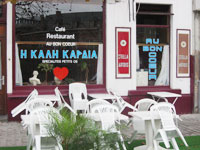 Just like other Western-European countries, Belgium was in short supply of manual labourers after the second World War, and initially recruited them from Mediterranean countries. So migrants from Spain, Italy, Greece and Portugal settled in Brussels in the fifties and sixties. They were followed by labourers from Morocco and Turkey. After the sixties boom, demand was slowing down and, as elsewhere in Europe, Belgium called for a migration-stop in 1974. Nevertheless, their ranks grew considerably after that, as particularly the Moroccan and Turkish people brought their families over. Even today, it is not uncommon for them to find marriage partners in their home countries, even though the large influx stagnated in the eighties. Brussels harbours the majority of Greeks, Moroccans and Portuguese in Belgium. The largest numbers of people of Italian descent can still be found around Liège, where they used to work in the coalmines. Most Turkish people did not settle in the large urban centres but chose smaller towns instead. Nevertheless, the Turkish and Moroccan communities are the largest groups of non-Europeans in Brussels. The mix of Southern Europeans is another large group. centre of Europe and world politics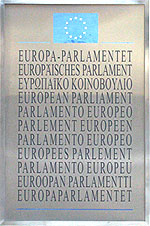 Ever since World War II, Brussels has turned itself increasingly into an international junction. As the graph above shows, more than half of Brussels’ immigrants are Europeans. A number of them works for the European Union and related organisations, as well as NATO and the European seat of the United Nations, which are also based here. This causes a lot of diplomatic activity and Brussels consequently has the second largest number of embassies and consulates in the world. In turn, its status of metropolis makes Brussels highly attractive for international companies to have their headquarters in Brussels. As a result, many highly educated and wealthy foreigners come here to work, even though their stay is often temporary so they are not inclined to integrate into local society. Sara (16) attends one of the three European schools in Brussels“In my father’s country, I am a foreigner. In my mother’s country, I am a foreigner. And in Belgium too.” Sara is sixteen. She was born in Brussels and has never lived anywhere else. But she doesn’t really know any Belgians. She attends a European school, that was built especially for the children of the fonctionnaires européens in the fifties. Four out of five pupils have parents who work for the Commission – the others have fathers and mothers who work for NATO or one of the other foreign companies, lobbying agencies or law firms that are drawn towards a city with so many international organisations. “When someone asks me where I am from, I usually don’t know what to answer. ‘From Brussels’, I often say, just to get it over with.” Her cousins in Germany and France, she tells us, are afraid of migrants, because they can’t place them. She however senses a somewhat vague acquaintance with them. And what scares her, she says, is that she is becoming more and more aware of this. “I realise more and more what kind of an outsider I am, and I am starting to wonder whether there is a place anywhere in the world, where I won’t be. Sometimes, I am jealous of people who do have a home country. It is easier for them to be cosmopolitan: if they don’t like living everywhere and nowhere and deal with all sorts of nationalities, at least they have something to fall back on. I don’t.” from: Verlangen naar een anker, NRC 15-01-2002 the newest immigrantsAt the same time, smaller groups from Central Africa, most of whom come from the former Belgian colony of Congo, but also refugees from elsewhere in the world and migrants from Eastern Europe increasingly find their niche in Brussels. As such, the capital looks increasingly diverse. 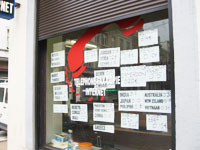 The eighties see an expansive growth of newcomers from literally all over the world. This group is a lot more heterogeneous than the groups of migrants that preceded it; not only in terms of origin, but also in terms of motivation for their arrival. Often they are asylum seekers or refugees, who have fled problem areas elsewhere in the world. The number of refugees has gone up spectacularly in the nineties, with a peak in the year 2000 (more than 40 000 in comparison with only a few thousand in the early eighties). The number that is assigned offical refugee or asylum seeker status however is very small, so it is safe to assume that the number of illegal refugees is high, even though there are no official figures. These so-called ‘people without papers’ (les sans-papiers in French), many of them from Eastern Europe, have to turn to illegal sources of income to survive. who lives where?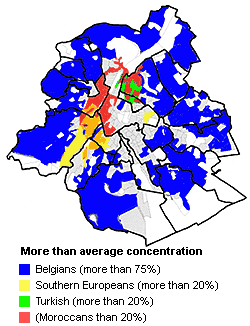 source data: Deboosere et al 2001 The less wealthy and less educated groups of migrants mainly settle in the nineteenth century circle around the city centre, where house prices and rent are affordable. Large groups of Moroccans live in the centre or in the neighbouring municipalities of Anderlecht, Sint-Jans-Molenbeek and Sint-Gillis. Large Turkish communities can be found in Sint-Joost-ten-Node and Schaarbeek, while Southern Europeans often live in the East of Anderlecht. A well-known African neighbourhood is the Matongé district in the heart of Brussels. Originally, this area was a meeting place for Congolese students who had come to Brussels after independence in 1960. The highly trained staff that come to Brussels to work in the international institutions are often well-off and want to live in the nicest areas. In practise, this means that they often live in the green belt in the South East, from Ukkel to Sint-Lambertus-Woluwe (>see map Brussels Capital Region) as well as in the bordering villages in the >Flemish periphery. 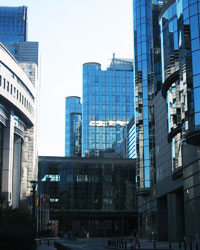 The presence of so much international activity brings along a whole infrastructure and has changed the face of Brussels drastically. Some parts of the inner city have had to give way entirely to modern high-rises of glass and steel. >English can be heard more and more and is starting to assert a place next to French and to a lesser extent, Dutch. Apart from that, all these people also speak their own languages and send their children to international schools where they are partly educated in their own language. Depending on their nationality, they form separate communities. The most scattered are the Dutch and the French, which is understandable given the fact that they speak the national languages, which makes integration a lot easier. The most segregated groups are the Japanese and the Americans, who live in typical foreign enclaves. Living in Brussels: Bianca Debaets, cabinet attaché “The Eurocrats as well, I would like them to take part in community life more. They live in a cocoon that is very hard to crack. There are even little businesses now that assist newcomers upon their arrival in the country. They help them with finding a house, a school for the children and shops where they can find their favourite products. So from the very beginning, a route is mapped out for them, which has as a result that they keep their distance from the other inhabitants of the city.” from: Brussel deze week, 27/05/2005 evolutions among the '>oldcomers'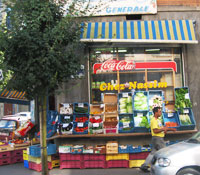 Many ‘migrants’, such as large groups of Southern Europeans, Turkish and Moroccans, have been in the country for several generations. Some of them have started to use >French at home and participate visibly in public life and >politics. That is partly to do with the recent wave in naturalisations, because citizenship allows these groups to have a voice in society. Moreover, young people often obtain a higher level of education than their parents, which is particularly the case for Moroccon girls, who tend to marry later and have fewer children, like Belgian families. This is less visible with Turkish girls, also because Turkish brides are still more often ‘imported’. In general, it seems as if the Turkish community is more turned inwards, while the Moroccon groups seem to become more heterogenous and fragmented. Entree into the labour market remains hard for both groups though, and unemployment figures for >allochtonous groups are noticeably higher than the Belgian ones (11%). 24% of all Moroccans and 27% of all Turkish people are unemployed. Things are easier for people who are originally from Southern Europe and the rest of the EU, as they have the advantage of their language skills. However, the relative disadvantage of citizens of Turkish and Moroccan descent is not only a consequence of a lower level of education, but also of discrimination. language and status
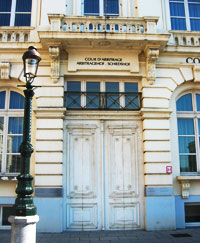 Since the >language laws of 1963, Dutch in Brussels has been protected by means of over-representation in local administrations. In Flanders, the economy boomed and people became more articulate and skilled. So the more recent migrants from Flanders into the Brussels Capital Region, are no longer the uneducated and poor labourers from before. French, on the other hand, has lost some of its prestige, because many of the less educated migrants also use it as a lingua franca. As a result, French is no longer the language of the elite. Moreover, because of the many contacts with Flemish industry and the numerous commuters from Flanders, bilingualism and even multilingualism have become a normal prerequisite for any job in the capital. So even for migrants with other language backgrounds, learning Dutch is an interesting option. Many of them already speak French and send their chidren to >Flemish schools. As a consequence, less than half of all students in Dutch medium schools in Brussels, actually speaks Dutch at home. future prospectsWith the enlargement of the European Union and the international institutions, Brussels has become ever more international and the coming and going of many foreigners will only increase. However, staff at these institutions and organisations are exceptional in the sense that they are highly educated on the one hand, but also likely to stay only temporarily in the country. Large groups from Eastern Europe and Central Africa on the other hand, are less likely to leave soon and would rather settle permanently in Brussels. Other groups such as the Southern Europeans, the Turkish and the Moroccans, have lived in Brussels for several generations and have found their place there and the chance that they will ‘go back’ is nil. That is why it is now an important task for the government to make sure that these groups are offered a genuine opportunity to be part of and take part in society. For years, not much has been done and as a consequence, certain communities feel isolated or isolate themselves. There have been some changes in policy recently and the authorities now work on raising awareness, fighting racism and discrimination and providing equal opportunities for minorities. Furthermore, a detailed policy has been developed for recent and future newcomers, with the introduction of compulsory citizenship courses and language training, just as in the Netherlands. Time will show whether this policy ‘works’.  As far as the >oldcomers are concerned, many of them have already been >naturalised and participate in >politics. These groups are becoming ever more heterogeneous, which makes it hard to refer to them as ‘the Moroccans’ or ‘the Italians’ for example. Brussels has become a city of minorities. The question is now to what extent those minorities and their respective languages should be acknowledged. The general opinion is that home languages should stay just that and they don’t need a separate status, but many do find that it would benefit all to have a multilingual approach in >schools. The French Community has been experimenting with this for a while, whereas the Flemings are still a bit suspicious, out of fear for a new wave of >Frenchification. However, there is no reason for that now, given the current advantageous economic position of Flanders. English usage has not increased at the expense of Dutch because Dutch really is a home language and a language used in industry and trade with Flanders. Research has shown that French may be slightly displaced by English as a lingua franca. English will become a handy third language for many, but it is unlikely to replace anybody’s home language. |